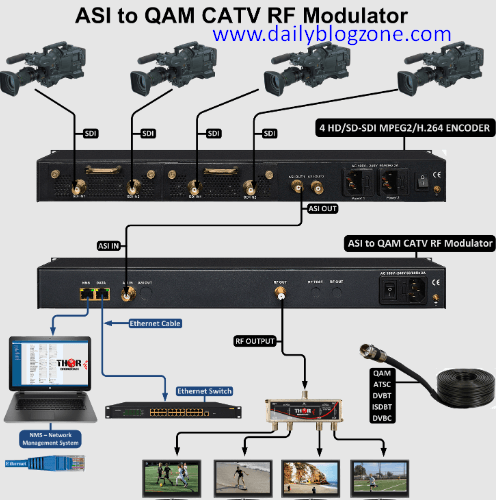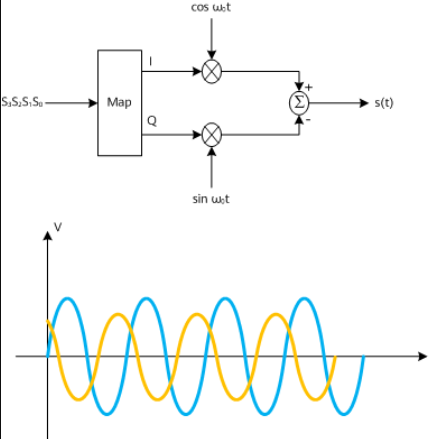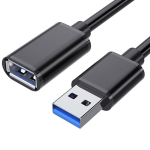In the realm of modern telecommunications, the seamless transmission of data has become paramount, driving the need for innovative technologies capable of efficiently modulating signals for optimal performance. Among these technologies stands the Quadrature Amplitude Modulation (QAM) Bodulator, a key player revolutionizing data transmission processes. With its ability to encode digital information into complex waveforms, the QAM Bodulator offers unparalleled advantages in maximizing bandwidth utilization and enhancing signal integrity.
The journey into the intricacies of QAM Bodulators unveils a landscape where digital communication systems thrive on the principles of modulation and demodulation. At its core, the QAM Bodulator operates by manipulating both the amplitude and phase of a carrier signal, allowing for the simultaneous transmission of multiple data bits per symbol. This fusion of amplitude and phase modulation not only optimizes spectral efficiency but also enables robust signal transmission over various communication channels.
In this article, we delve into the fundamental concepts behind QAM Bodulators, exploring their architecture, functionality, and diverse applications across telecommunications networks. From telecommunications infrastructure to wireless communication systems, QAM Bodulators play a pivotal role in driving the evolution towards faster, more reliable data transmission. By understanding the inner workings of QAM Bodulators, we can unlock new possibilities for enhancing connectivity, efficiency, and performance in the digital age.
Join us on a journey through the complexities and innovations of QAM Bodulators as we illuminate their significance in shaping the future of communication technology.

Understanding the QAM Bodulator: Revolutionizing Signal Modulation
In today’s fast-paced digital world, efficient signal modulation is essential for seamless communication and data transmission. One innovative technology that is making waves in this field is the QAM Bodulator. But what exactly is the QAM Bodulator, and how does it revolutionize signal modulation? Let’s delve deeper into this cutting-edge technology.
1. The Basics of QAM Bodulation
What is QAM?
QAM stands for Quadrature Amplitude Modulation. It’s a modulation scheme widely used in telecommunications to transmit digital signals. QAM effectively combines two amplitude-modulated signals into a single channel, maximizing the use of available bandwidth.
Introducing the Bodulator
The term “Bodulator” is derived from “body” and “modulator,” signifying its role in modulating signals. The QAM Bodulator is an advanced device designed to enhance the efficiency and reliability of signal modulation processes.
2. How QAM Bodulator Works
Signal Processing
The QAM Bodulator employs sophisticated signal processing algorithms to manipulate the characteristics of transmitted signals. By adjusting the phase and amplitude of the carrier signal, it optimizes signal transmission for maximum efficiency.
Adaptive Modulation
One of the key features of the QAM Bodulator is its ability to adapt modulation parameters dynamically. This adaptive modulation ensures optimal signal quality under varying transmission conditions, improving overall system performance.
3. Benefits of QAM Bodulation
Enhanced Data Throughput
By maximizing the use of available bandwidth, QAM Bodulation significantly increases data throughput rates. This is particularly beneficial in high-speed communication systems where maximizing data transfer rates is crucial.
Improved Signal Reliability
The advanced signal processing capabilities of the QAM Bodulator enhance signal reliability, minimizing errors and signal degradation during transmission. This leads to more robust communication networks with reduced downtime.
4. Applications of QAM Bodulator
Telecommunications
In the telecommunications industry, QAM Bodulation is widely used in various applications, including satellite communication, digital television, and broadband internet services. Its efficiency and reliability make it indispensable in modern communication networks.
Wireless Networks
QAM Bodulation plays a vital role in wireless communication systems, such as Wi-Fi and cellular networks. By optimizing signal modulation, it enables faster and more reliable data transmission, improving user experience and network performance.
5. Future Outlook
The QAM Bodulator represents a significant advancement in signal modulation technology, with implications for various industries reliant on efficient communication systems. As technology continues to evolve, we can expect further innovations in signal modulation techniques, driving the development of faster, more reliable communication networks.

Frequently Asked Questions On qAM bodulator
1.What is the fundamental principle behind QAM Bodulator technology?
The fundamental principle behind QAM Bodulator technology lies in its utilization of Quadrature Amplitude Modulation (QAM), which combines amplitude and phase modulation to encode digital information into an analog signal for transmission.
2.How does QAM Bodulator differ from traditional modulation techniques?
QAM Bodulator differs from traditional modulation techniques by incorporating both amplitude and phase modulation, allowing for more efficient use of available bandwidth and higher data transmission rates compared to single-modulation methods.
3.What are the main advantages of using QAM Bodulation in telecommunications?
The main advantages of using QAM Bodulation in telecommunications include enhanced data throughput, improved signal integrity, and increased reliability in communication systems. These factors contribute to faster and more efficient data transmission, particularly in high-speed networks.
4.Can you explain the significance of adaptive modulation in QAM Bodulator?
Adaptive modulation in QAM Bodulator is significant as it allows the device to dynamically adjust modulation parameters based on changing transmission conditions. This ensures optimal signal quality and reliability, even in challenging environments with varying levels of noise and interference.
5.What are the practical applications of QAM Bodulator in modern communication networks?
QAM Bodulator has practical applications in modern communication networks such as satellite communication, digital television, broadband internet services, and wireless networks like Wi-Fi and cellular systems. Its versatility and efficiency make it indispensable in various communication technologies.
6.How does QAM Bodulation contribute to enhancing data transmission rates?
QAM Bodulation contributes to enhancing data transmission rates by maximizing the utilization of available bandwidth. Through its efficient modulation techniques, it enables faster and more reliable communication, ultimately leading to improved network performance.
7.What role does QAM Bodulator play in improving signal integrity and reliability?
QAM Bodulator plays a crucial role in improving signal integrity and reliability by minimizing signal distortion and errors during transmission. Its advanced modulation capabilities ensure clearer and more reliable communication across different platforms and environments.
8.How does QAM Bodulator address challenges related to noise and interference in signal transmission?
QAM Bodulator addresses challenges related to noise and interference in signal transmission through its adaptive modulation techniques. By dynamically adjusting modulation parameters, it mitigates the effects of noise and interference, resulting in more robust communication networks.
9.What advancements are expected in QAM Bodulator technology in the near future?
Advancements in QAM Bodulator technology are expected to focus on further enhancing data transmission efficiency, increasing signal processing capabilities, and improving adaptability to evolving communication environments. These advancements will drive the development of faster, more reliable communication systems.
10.How does QAM Bodulation impact the performance of wireless communication systems?
QAM Bodulation significantly impacts the performance of wireless communication systems by enabling faster data rates, extended coverage, and improved reliability. Its efficient modulation techniques optimize signal transmission, enhancing the overall performance and user experience of wireless networks.
In conclusion:
the exploration of QAM Bodulator technology reveals its pivotal role in revolutionizing modern communication networks. With its innovative approach to signal modulation, QAM Bodulation offers unparalleled efficiency, reliability, and adaptability, making it indispensable in various telecommunications and wireless applications. As we continue to embrace the advancements in QAM Bodulator technology, we pave the way for enhanced data transmission rates, improved signal integrity, and ultimately, a more connected and technologically advanced future. It is evident that QAM Bodulator stands as a cornerstone of modern communication infrastructure, shaping the landscape of digital connectivity for years to come.








1 thought on “The Role of QAM Bodulators in Modern Communication Systems”